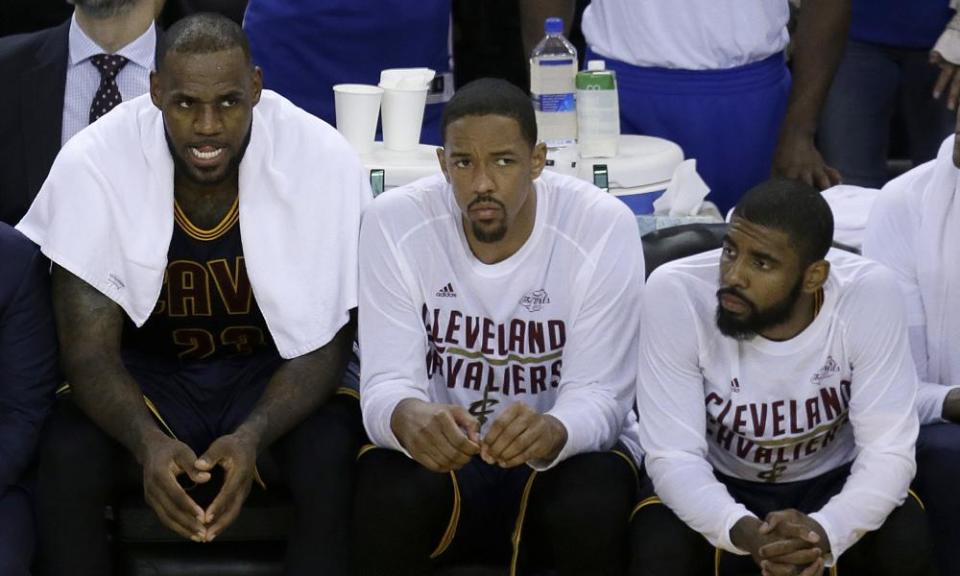The Cavaliers mess shows why the NBA must end the conference system
With the impending end of the Cleveland dynasty in the East, the NBA must look into doing away with the current system altogether

Over the past few years LeBron James has been firmly in control of the Eastern Conference: his teams have made the NBA finals every year since 2011. But we could soon see the end of that streak. The Cleveland Cavaliers are currently in turmoil – their second-best player, Kyrie Irving wants out and insiders have speculated that James may opt-out of his contract at the end of next season should the team fail to rebuild.
If James and Irving do leave, it would leave a huge vacuum in the already diluted Eastern Conference, one that might not get filled anytime in the near future. If there ever were a time for Adam Silver and the NBA to have a serious debate about moving beyond the increasingly unworkable conference system, it is now. For many fans, this seems like a no-brainer, but making such a large change would come with its own set of drawbacks.
The case for getting rid of conferences
Fairness: The easiest way to move on from conferences is to reseed the playoffs based on the regular series standings. So, in the first round of the postseason, the team with the best record would face the team with the 16th best record, the No2 team would face No15, etc. This would be more fair than the current setup, especially since it would also put an end to teams losing out on playoff appearances to teams with worse records for purely geographical reasons. The NBA has already devalued the importance of winning one’s division, why not make the next logical step?
The talent gap: In the past, most analysts were certain that the imbalance between the two conferences would work themselves out. Eventually, the thought was, players would migrate to teams that gave them an easier path to the finals. This was a perfectly a reasonable and rational thing to believe, but it’s yet to happen. Over the last few weeks, Western Conference teams have continue to acquire pretty much every available all-star. The Eastern Conference remains the junior circuit and the future isn’t looking any brighter. When does a trend effectively become the new status quo? It feels like we’re almost there.
Entertainment value: Reseeding the playoffs would mean more East-West matchups in the first few founds, which means plenty of postseason series we haven’t seen before. It would also mean that some of the more talented teams in the West wouldn’t be facing each other in the first- or second-rounds. The longer the NBA’s biggest stars are still playing, the better it is for the league.
The NBA finals: Without an automatic spot going to the team that emerges from the Eastern Conference, it becomes more likely that the two teams that face each other in the finals will actually be the best two teams in the league. Isn’t that the whole point of the playoffs?
The case for keeping conferences
The schedule: Moving away from conferences sounds simple, but it comes with a whole new set of problems, starting with the regular-season schedule. As things stand, teams play 52 games within their conference and just 30 outside of it. Keeping the schedule as it is would do little to address the imbalance that the new system was designed to fix. Teams currently in the West would still be facing tougher opposition than their counterparts in the East, yet their wins and losses would count exactly the same. While a complete 50/50 split wouldn’t be possible, or even advisable, a certain amount of rejigging would be required.
Injury risk and fatigue: This leads us to the major problem with this proposed solution: changing the schedule would mean increased travel time and longer road trips. That’s not ideal for anyone, particularly with teams still struggling to figure out how to keep players healthy throughout the grueling 82 game regular season.
Last this month, Silver commented that although the idea of 1-16 playoff system was popular, he ultimately felt it was too risky to implement: “We concluded that given all the focus on sports science, health of our players and impact of travel, it didn’t make sense, at least at this time, to move to a rebalanced schedule because we played an imbalanced schedule.”
As always, the best solution from a purely basketball perspective would involve reducing the number of games in the regular season, but that simply is not going to happen. Owners would never agree to losing that revenue.
The owners: Speaking of owners, Phoenix Suns owner Robert Sarver, one of the more prominent voices in favor of reseeding the playoffs, flat out told ESPN.com that, “the Eastern teams don’t like it.” And why would they? It would make it more difficult for them to reach the playoffs and exponentially harder to advance once they’re there.
The rivalries: Plus, there’s a downside to all those novel new playoff opponents. As ESPN’s Zach Lowe pointed out a few years ago in his breakdown of the great conference debate, reseeding would result in a much lower chance of classic rivalries meeting in the playoffs. It’s not a major stumbling block here, but it’s something worth keeping in mind.
It’s clear that getting rid of conferences would produce its own particular set of problems. These problems, however, are more logistical than existential. When Lowe wrote his piece back in 2014, he assumed that the situation would work itself out to some degree. That is not happening. In fact, the league has become even more unbalanced and that’s with LeBron remaining in the East. We’ve hit the point where not making a change would be worse than whatever problems it might bring.

